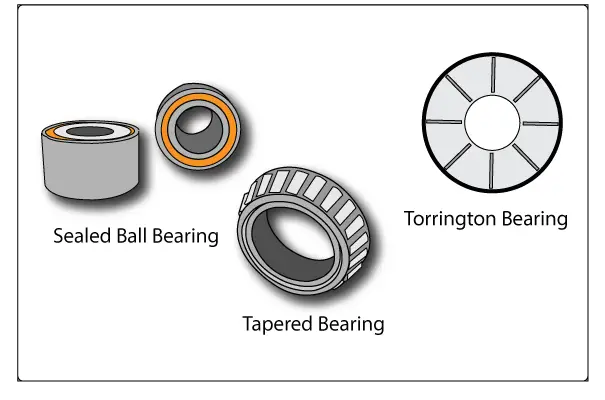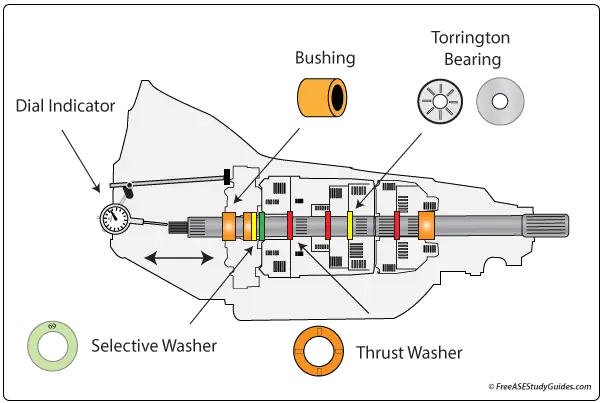Automatic Transmission Bearings

An automatic transmission has several different types of bearings. Each bearing and washer serves a unique purpose.
Ball and Roller Bearings

Ball Bearings: Transmission shafts have roller and ball bearings that rotate at high speeds. Ball bearings are capable of withstanding both radial and axial loads. They consist of caged steel balls that ride in a hardened steel race.
Roller Bearings: Roller bearings have more surface area than ball bearings. They require a slight preload and are well-suited for heavy applications. Manufacturers use them to reduce friction in differentials, final drives, and transfer shafts. Check the vehicle manufacturer's specifications before adjusting the preload on a tapered roller bearing.
Needle Bearings

The two most notable automatic transmission shafts are the input and the output shafts. Endplay is adjusted and controlled by selective thrust washers.
Needle Bearings: Needle bearings consist of small needle-like bearings held in a round cylinder by assembly grease. Be careful when handling needle bearings because they're not fastened to the cylinder and can fall from the carrier. Use assembly lube, petroleum jelly, or Vaseline to hold and keep them in the case. Never use white chassis or bearing grease when installing bearings or washers in a transmission. These greases do not mix well with automatic transmission fluid.
Torrington Bearings

Torrington Bearings: A Torrington bearing has needle bearings placed in a spoke pattern inside of a thrust washer. They're also known as caged needle bearings. They reduce friction and control shaft endplay.
Bushings: Bushings are brass or soft metal cylinder shaped bearings. The bushing wears before the hardened steel shaft. They're usually pressed into the transmission case and may contain a small oil hole that must align with the oil passage in the case.